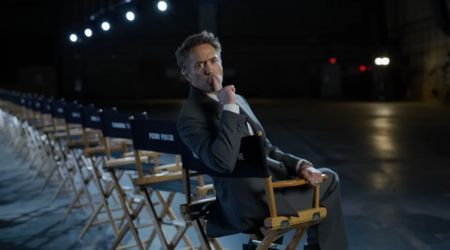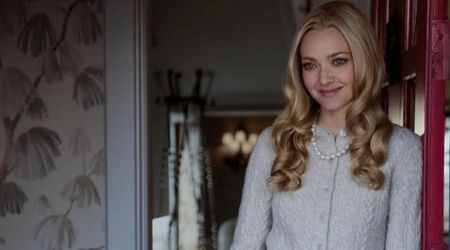'The Painter and the Thief' Review: Two fragile souls find meaning, art and representation in each other

Spoilers for 'The Painter and the Thief'
Somewhere towards the end of the film, "the thief", Karl-Bertil, is in "the painter" Barbora's studio. Sober and rehabilitated, he is not in a space of needing attention to be focussed on him. Barbora, on the other hand, is struggling to balance her chaotic, self-destructive drive that fuels her art and the effect it is having on her relationship with Oyestein, her partner. "This couple's therapy is making me feel sh**ty," she says as she bites into the breakfast sandwich Bertil has got.
As someone who has spent a lifetime feeling sh**ty about himself, Bertil tells her it's necessary to work through it. Barbora smirks and says, "...to know how f**ked up I am? I didn't know I was." There is a third silent participant in their close but complicated friendship -- the director Benjamin Ree who has followed Barbora and Bertil from their fourth real-life encounter.
Despite not being in the frame, he is the one who orchestrates the beats of their odd friendship within the film. The frames slide between the present and the past, between perspectives and revelations, shading in the details to have the two leads stand out starkly within the film's context. Their fragility and self-destructive tendencies are mirrored in each other and yet both are transformed by their interactions.
It could be said that Bertil makes the first unknowing move to create a relationship between the two when he steals one of her paintings from a gallery in Oslo. Barbora obsessively views the surveillance footage of the thieves, Bertil, and Micah. When Bertil is caught a few months later and stands for trial, Barbora approaches him with a request -- can she paint a portrait of him? Bertil apologizes for the theft and agrees to her request. The twisted fairytale-like premise of their friendship is illustrated by hand-drawn sketches of the moment by Barbora.
Then comes the hours spent in Barbora's studio as she sketches him obsessively with a degree of attention and interest that Bertil, who was abandoned by his mother and half-heartedly raised by his father, has never experienced in his life. He is both nervous and electrified by the attention.
Bertil's moment of transformation comes when he sees the first completed portrait of himself. He bursts out crying, experiencing a half-ecstatic, half-cathartic moment of "being seen". Not as an addict, or a failure but as a human being in pain -- the blood from his arm bleeding into a wine cup. He is so shaken that he pushes away Barbora as if his skin is too raw to be touched when she tries to hug him.
But this is when he starts to truly open up to her and the relationship she is offering. After this, Barbora repeatedly brings him portraits of himself, and each time she does, it is like she is setting an external locus for his selfhood that he can work toward. By showing him what she sees, she gives him a new way to view himself instead of his own self-conception that teeters between self-loathing and the fear that he will let people down because he is an addict.
His eyes always have a hunted look as if waiting for the moment people will abandon him. Barbora's paintings, however, reveal a fuller, more substantial, and striking version of himself. In a weird way, he literally grows into that conception as the film progresses, his beard and muscles filling out as if it has received sustenance.
Barbora's motivations are more obscure. At first, it seems like she is trying to find out about her paintings or at least about the moment of the robbery -- she wants to know why Bertil took her painting and what he did with it. In the courtroom, he had told her it was because it was beautiful. But outside the courtroom, Bertil says he doesn't remember a thing. It is a prickly start.
But later, Barbora tells Oyestein, that she "fell in love with him" the moment she saw him in the courtroom. Barbora is also "seen" by Bertil who says she has a fascination with death and "dark" impulses and that she only wants to know about his dark aspects rather than his light aspects. Oyestein also points out that Barbora's fascination with Bertil is another reflection of her self destructive side that had made her keep in touch with an abusive man in the past because it gave her the inspiration to paint. Barbora herself tells Oyestein point-blank that she pursues "suffering" when it is "aesthetic".
So in some ways, it is more difficult for Barbora to stop being a "painting addict" than it is for Bertil to stop being a "heroin addict". And yet, their journeys are intertwined. Barbora tracks down Micah the other thief who helps her get back one of her lost paintings. In what seems like an act of reparation, Bertil helps her mount the canvas on a frame. Then, at the exhibition, we see that Barbora has replaced an old lover of Bertil's in a picture with her own body. 'The Painter and The Thief', lie intertwined, asking the viewer to make what they will of these two fragile souls finding meaning, art, representation, and re-representation within each other.
'The Painter and The Thief' premiered on May 22 on Hulu and is available for streaming.










